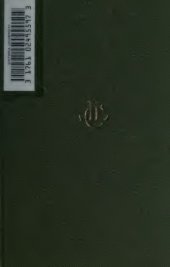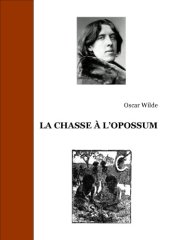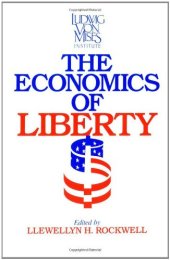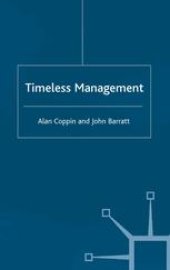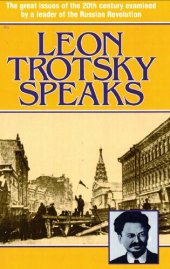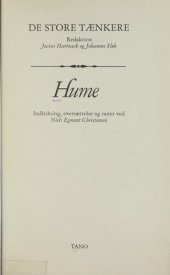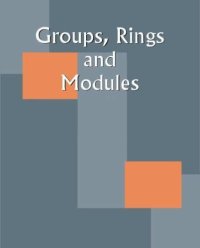
Ebook: Groups, Rings, Modules
- Genre: Mathematics // Algebra
- Series: Harper's series in modern mathematics
- Year: 1974
- Publisher: Harper & Row
- Language: English
- pdf
The main thrust of this book is easily described. It is to introduce the reader who
already has some familiarity with the basic notions of sets, groups, rings, and
vector spaces to the study of rings by means of their module theory. This program
is carried out in a systematic way for the classicalJy important semisimple rings,
principal ideal domains, and Oedekind domains. The proofs of the well-known
basic properties of these traditionally important rings have been designed to
emphasize general concepts and techniques. HopefulJy this wilJ give the reader a
good introduction to the unifying methods currently being developed in ring
theory.
CONTENTS
Preface ix
PART ONE 1
Chapter I SETS AND MAPS 3
I. Sets and Subsets 3
2. Maps S
3. Isomorphisms of Sets 7
4. Epimorphisms and Monomorphisms 8
S. The Image Analysis of a Map 10
6. The Coimage Analysis of a Map II
7. Description of Surjective Maps 12
8. Equivalence Relations 13
9. Cardinality of Sets IS
10. Ordered Sets 16
II. Axiom of Choice 17
12. Products and Sums of Sets 20
Exercises 23
Chapter 2 MONOIDS AND GROUPS 27
1. Monoids 27
2. Morphisms of Monoids 30
3. Special Types of Morphisms 32
4. Analyses of Morphisms 37
5. Description of Surjective Morphisms 39
6. Groups and Morphisms of Groups 41
7. Kernels of Morphisms of Groups 43
8. Groups of Fractions 49
9. The Integers 55
10. Finite and Infinite Sets 57
Exercises 64
Chapter 3 CATEGORIES 75
1. Categories 75
2. Morphisms 79
3. Products and Sums 82
Exercises 85
Chapter 4 RINGS 99
1. Category of Rings 99
2. Polynomial Rings 103
3. Analyses of Ring Morphisms 107
4. Ideals 112
5. Products of Rings 115
Exercises 116
PART TWO 127
Chapter 5 UNIQUE FACTORIZATION DOMAINS 129
I. Divisibility 130
2. Integral Domains 133
3. Unique Factorization Domains 138
4. Divisibility in UFD's 140
5. Principal Ideal Domains 147
6. Factor Rings of PID's 152
7. Divisors 155
8. Localization in Integral Domains 159
9. A Criterion for Unique Factorization 164
10. When R [X] is a UFD 169
Exercises 171
Chapter 6 GENERAL MODULE THEORY 176
1. Category of Modules over a Ring 178
2. The Composition Maps in Mod(R) 183
3. Analyses of R-Module Morphisms 185
4. Exact Sequences 193
5. Isomorphism Theorems 201
6. Noetherian and Artinian Modules 206
7. Free R-Modules 210
8. Characterization of Division Rings 216
9. Rank of Free Modules 221
10. Complementary Submodules of a Module 224
11. Sums of Modules 231
CONTENTS vII
12. Change of Rings 239
13. Torsion Modules over PID's 242
14. Products of Modules 246
Exercises 248
Chapter 7 SEMISIMPLE RINGS AND MODULES 266
I. Simple Rings 266
2. Semisimple Modules 271
3. Projective Modules 276
4. The Opposite Ring 280
Exercises 283
Chapter 8 ARTINIAN RINGS 289
1. Idempotents in Left Artinian Rings 289
2. The Radical of a Left Artinian Ring 294
3. The Radical of an Arbitrary Ring 298
Exercises 302
PART THREE 311
Chapter 9 LOCALIZATION AND TENSOR PRODUCTS 313
1. Localization of Rings 313
2. Localization of Modules 316
3. Applications of Localization 320
4. Tensor Products 323
5. Morphisms of Tensor Products 328
6. Locally Free Modules 334
Exercises 337
Chapter 10 PRINCIPAL IDEAL DOMAINS 351
I. Submodules of Free Modules 352
2. Free Submodules of Free Modules 355
3. Finitely Generated Modules over PID's 359
4. Injective Modules 363
5. The Fundamental Theorem for PID's 366
Exercises 371
Chapter II APPLICATIONS OF FUNDAMENTAL THEOREM 376
I. Diagonalization 376
2. Determinants 380
3. Mat rices 387
4. Further Applications of the Fundamental Theorem 391
5. Canonical Forms 395
Exercises 40 I
PART FOUR 413
Chapter 12 ALGEBRAIC FIELD EXTENSIONS 415
1. Roots of Polynomials 415
2. Algebraic Elements 420
3. Morphisms of Fields 425
4. Separability 430
5. Galois Extensions 434
Exercises 440
Chapter 13 DEDEKIND DOMAINS 445
I. Dedekind Domains 445
2. Integral Extensions 449
3. Characterizations of Dedekind Domains 454
4. Ideals 457
5. Finitely Generated Modules over Dedekind Domains 462
Exercises 463
Index 469
already has some familiarity with the basic notions of sets, groups, rings, and
vector spaces to the study of rings by means of their module theory. This program
is carried out in a systematic way for the classicalJy important semisimple rings,
principal ideal domains, and Oedekind domains. The proofs of the well-known
basic properties of these traditionally important rings have been designed to
emphasize general concepts and techniques. HopefulJy this wilJ give the reader a
good introduction to the unifying methods currently being developed in ring
theory.
CONTENTS
Preface ix
PART ONE 1
Chapter I SETS AND MAPS 3
I. Sets and Subsets 3
2. Maps S
3. Isomorphisms of Sets 7
4. Epimorphisms and Monomorphisms 8
S. The Image Analysis of a Map 10
6. The Coimage Analysis of a Map II
7. Description of Surjective Maps 12
8. Equivalence Relations 13
9. Cardinality of Sets IS
10. Ordered Sets 16
II. Axiom of Choice 17
12. Products and Sums of Sets 20
Exercises 23
Chapter 2 MONOIDS AND GROUPS 27
1. Monoids 27
2. Morphisms of Monoids 30
3. Special Types of Morphisms 32
4. Analyses of Morphisms 37
5. Description of Surjective Morphisms 39
6. Groups and Morphisms of Groups 41
7. Kernels of Morphisms of Groups 43
8. Groups of Fractions 49
9. The Integers 55
10. Finite and Infinite Sets 57
Exercises 64
Chapter 3 CATEGORIES 75
1. Categories 75
2. Morphisms 79
3. Products and Sums 82
Exercises 85
Chapter 4 RINGS 99
1. Category of Rings 99
2. Polynomial Rings 103
3. Analyses of Ring Morphisms 107
4. Ideals 112
5. Products of Rings 115
Exercises 116
PART TWO 127
Chapter 5 UNIQUE FACTORIZATION DOMAINS 129
I. Divisibility 130
2. Integral Domains 133
3. Unique Factorization Domains 138
4. Divisibility in UFD's 140
5. Principal Ideal Domains 147
6. Factor Rings of PID's 152
7. Divisors 155
8. Localization in Integral Domains 159
9. A Criterion for Unique Factorization 164
10. When R [X] is a UFD 169
Exercises 171
Chapter 6 GENERAL MODULE THEORY 176
1. Category of Modules over a Ring 178
2. The Composition Maps in Mod(R) 183
3. Analyses of R-Module Morphisms 185
4. Exact Sequences 193
5. Isomorphism Theorems 201
6. Noetherian and Artinian Modules 206
7. Free R-Modules 210
8. Characterization of Division Rings 216
9. Rank of Free Modules 221
10. Complementary Submodules of a Module 224
11. Sums of Modules 231
CONTENTS vII
12. Change of Rings 239
13. Torsion Modules over PID's 242
14. Products of Modules 246
Exercises 248
Chapter 7 SEMISIMPLE RINGS AND MODULES 266
I. Simple Rings 266
2. Semisimple Modules 271
3. Projective Modules 276
4. The Opposite Ring 280
Exercises 283
Chapter 8 ARTINIAN RINGS 289
1. Idempotents in Left Artinian Rings 289
2. The Radical of a Left Artinian Ring 294
3. The Radical of an Arbitrary Ring 298
Exercises 302
PART THREE 311
Chapter 9 LOCALIZATION AND TENSOR PRODUCTS 313
1. Localization of Rings 313
2. Localization of Modules 316
3. Applications of Localization 320
4. Tensor Products 323
5. Morphisms of Tensor Products 328
6. Locally Free Modules 334
Exercises 337
Chapter 10 PRINCIPAL IDEAL DOMAINS 351
I. Submodules of Free Modules 352
2. Free Submodules of Free Modules 355
3. Finitely Generated Modules over PID's 359
4. Injective Modules 363
5. The Fundamental Theorem for PID's 366
Exercises 371
Chapter II APPLICATIONS OF FUNDAMENTAL THEOREM 376
I. Diagonalization 376
2. Determinants 380
3. Mat rices 387
4. Further Applications of the Fundamental Theorem 391
5. Canonical Forms 395
Exercises 40 I
PART FOUR 413
Chapter 12 ALGEBRAIC FIELD EXTENSIONS 415
1. Roots of Polynomials 415
2. Algebraic Elements 420
3. Morphisms of Fields 425
4. Separability 430
5. Galois Extensions 434
Exercises 440
Chapter 13 DEDEKIND DOMAINS 445
I. Dedekind Domains 445
2. Integral Extensions 449
3. Characterizations of Dedekind Domains 454
4. Ideals 457
5. Finitely Generated Modules over Dedekind Domains 462
Exercises 463
Index 469
Download the book Groups, Rings, Modules for free or read online
Continue reading on any device:

Last viewed books
Related books
{related-news}
Comments (0)
